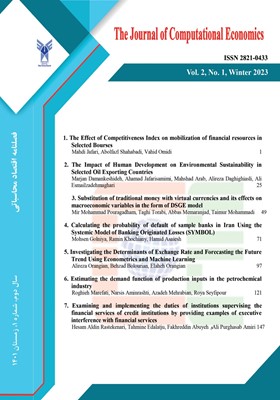Estimating the demand function of production inputs in the petrochemical industry
Subject Areas : Computational economics
Roghayeh Marefati
1
*
,
Narciss Amin Rashti were
2
,
Azadeh Mehrabian
3
![]() ,
Roya Seyfipour
4
,
Roya Seyfipour
4
1 - Ph.D. student of economic sciences, Islamic Azad University, Central Tehran branch, Tehran, Iran
2 - Assistant Professor, Department of Economics, Islamic Azad University, Central Tehran Branch, Tehran, Iran
3 - Assistant Professor, Department of Economics, Islamic Azad University, Central Tehran Branch, Tehran, Iran
4 - Assistant Professor, Department of Economics, Islamic Azad University, Central Tehran Branch, Tehran, Iran
Keywords: Input Demand, , , , , Petrochemical Industry, , , , , Energy, , , , , Simultaneous Equation System,
Abstract :
The aim of the current research is to obtain the demand function of production inputs in the petrochemical industry. In order to test the relationship between the variables, the information of the time period 2015-2018 has been used. The statistical population of this research is the companies that produce petrochemical products. The results of this research showed that the relationship between the share of raw material production factors in the total cost paid to production factors and the relative price of labor, raw materials and raw materials and products is positive and its relationship With the relative price of machines. and energy is negative. The results of substitution elasticities also show that capital with labor, raw materials with labor and capital with energy are alternative inputs, capital with raw materials, raw materials with energy are complementary inputs. In the estimated cross elasticities, see It was found that the price elasticity of raw materials is higher than other inputs in terms of absolute value, in other words, the demand for raw materials is more sensitive to price changes than other inputs. The inputs of capital, labor and energy are in the next ranks in this field. Also, the absolute value of the numerical value of the price elasticities of all inputs is less than one, and therefore it can be said that the demand for all inputs is inelastic.
_||_

